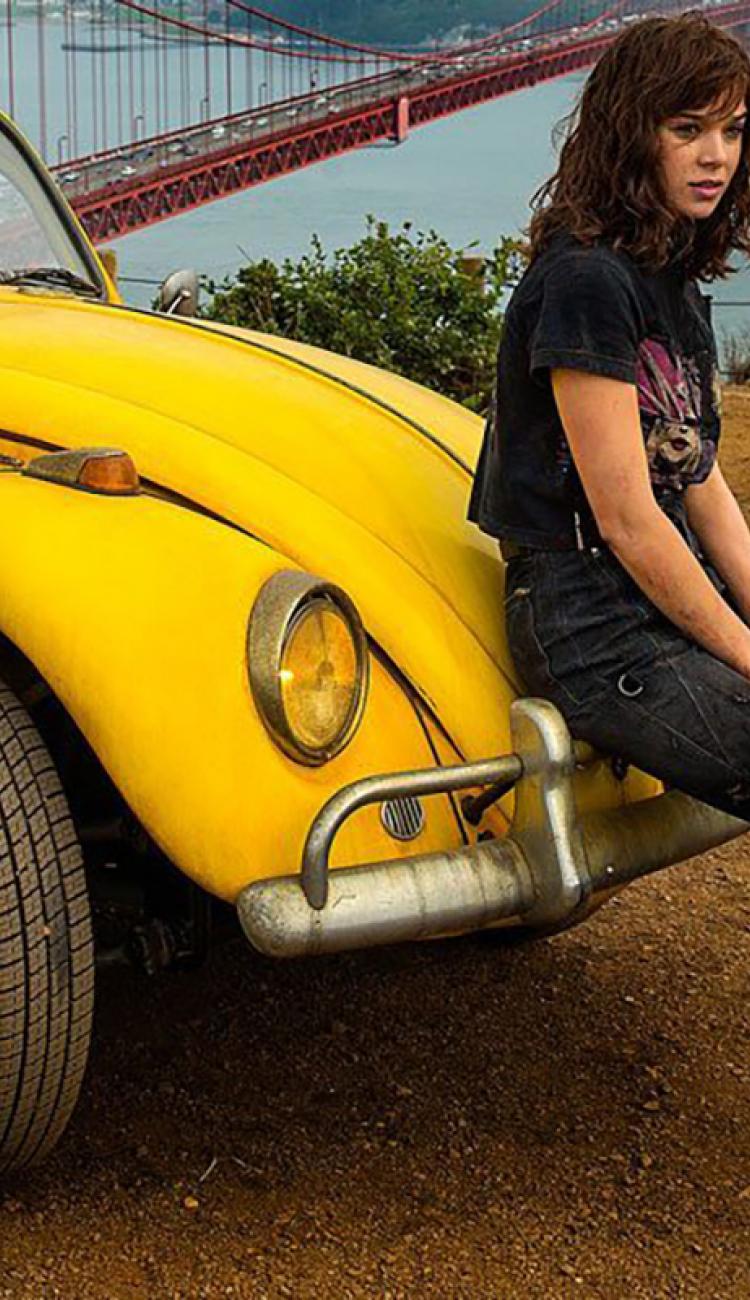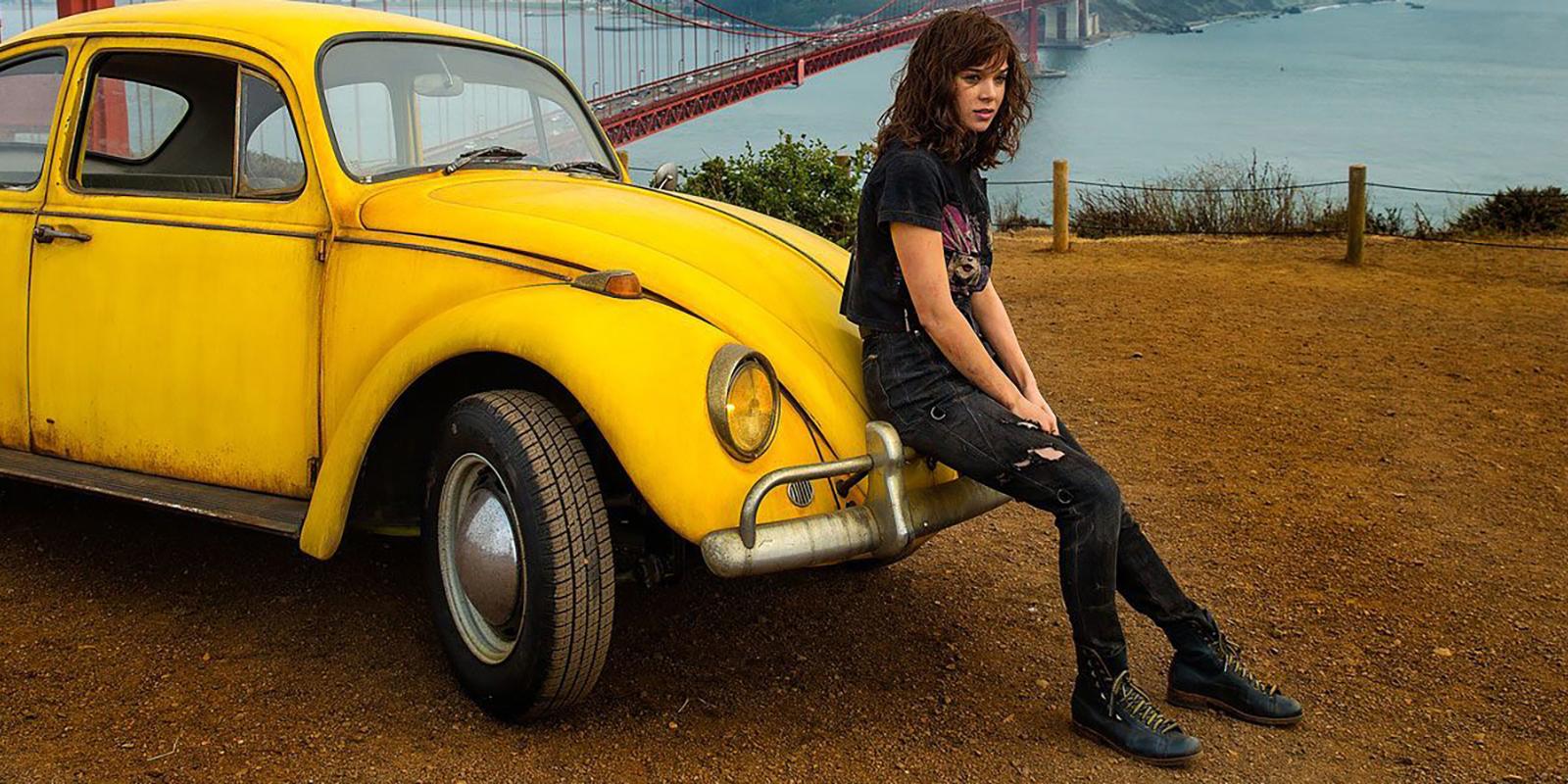Dec 23, 2018
Veteran costume designer Dayna Pink details how she created a custom wardrobe for Hailee Steinfeld and the cast of Paramount’s latest film.
Cybertron’s Autobots and Decepticons are back in movie theaters, and with a bit of a style refresh.
Paramount Picture’s Bumblebee presents the character’s origin story, which led a new direction, a 1980s setting, and a return to the robots’ classic designs from the original animated series. Costume designer Dayna Pink was behind the style transformation of actress Hailee Steinfeld—who stars in the leading role as Charlie Watson—and the cast. She wanted their looks to be specific to the ‘80s era and stand out from those of recent films and TV series that are part of pop culture’s current obsession with the decade.
“There were so many different things that were happening in the ‘80s,” says Pink. The era’s style that appears in the film “wasn't tight, and it wasn't as typical. It wasn’t the shoulder-pad ‘80s, because that’s not what we went for. It was more rocker ‘80s”.
Bumblebee follows Steinfeld’s Charlie, an teenaged outsider with a rebellious spirit, who crosses paths with Bee, as he seeks refuge on Earth while his home planet is at war. The arrival of the Decepticons puts both of them, and the planet, at risk. The film is a heartfelt coming-of-age story that pulls away from metal-on-metal brawls, off-color humor, and high-flown action sequences of the previous films.
Ahead of the movie’s release, Pink spoke with Viacom about giving Steinfeld a unique Joan Jett aesthetic, as well as how she leaned into nostalgia to build a wardrobe.
Viacom: What drew you to working on a movie with only a few human characters?
Dayna Pink: I was really interested that the film was going back in time. I've done ‘80s movies before, and I love that era. It’s fun and crazy.
For ‘80s stuff, you could just shop in the store. Urban Outfitters has ‘80s stuff and American Apparel jeans were so ‘80s. But we didn't go that way. We got everything from warehouses and old places that sell stuff by the pound. Then, we made everything, or we took pieces and took them apart and put them back together in different ways.
V: How did the movie’s story impact your creative decisions?
DP: I like the fact that they chose Travis [Knight] to direct the film because his sensibility is so opposite of what you think of when you think of the Transformers movies. The storytelling is soft and sweet, and it's about the little details. So, I was so excited about the idea of the two things coming together.
When I dress somebody, it's about the details, always. It's about what they're wearing, and then it's about what's the ring that Charlie’s wearing, and what's that bolt around her neck on the leather chain, where did she get that? Was that maybe from the car she was working on with her dad. It's all the little details that we add to it that marries together the big and the small.

V: Tell me about some of Charlie’s looks.
DP: We decided that she herself was a Transformer, so there's all these different parts of her wardrobe that transform themselves. She's the girl who’s in her bedroom and taking apart her clothes and putting them back together. She transforms all her stuff.
She's wearing a vest that's also a backpack, because we took a big pocket off of an army bag and put it on the back of her vest that she uses instead of a backpack. There are pockets off of different things that are added to different pieces. There's a jacket that the sleeves come off of.

V: At its core, the film is a coming-of-age story. So, the audience sees Charlie evolve over the course of the movie. Does her wardrobe evolve with her?
DP: Yes, there is an arc. Toward the end, she gets dressed to go save Bee, and she puts on her “superhero outfit.” Her boots happened to be laced with black and yellow laces like Bumblebee, and she puts on that vest-jacket, and, to me, that’s her armor.
Then at the very end when she's driving the car, she's wearing a white-fitted, baseball-style T-shirt that you would never have seen her wear before that time in the movie, because everything else was a little bit darker and moodier. At the end, it sort of brightens up.
V: And, there were also little teeny touches of yellow to her look too, right? What led to that decision?
DP: There were! They are the only ones that have that, her and Bee. On purpose, we sort of avoided yellow in general. We didn't do a lot of yellow at all because that was him. So if anyone was going to have it, it would only be her.
She's drawn to him, and I think that was appropriate that she would be the only other person to wear the color.

V: Do you personally have a favorite look you worked on?
DP: I do love the T-shirt that we made her that you see at the end. We made all these ‘80s-inspired graphics—lightning bolts in all these ‘80s colors. We took these graphics, chopped them up into little pieces, and then put them back together on her T-shirt. The T-shirt was also part cotton, part netting, and we sewed the graphics on it. The back of it says ‘Never Mind.’ Those are all different graphics that we made.
I just like the fact that it was something that we got the fabric, made the pieces, and made the graphics. Then, just took all these different pieces and put it together—it's so ‘80s to me and I love how it looks.

V: What about the other characters’ looks? Any notable favorites?
DP: One of the things that I really loved was creating the Sector Seven stuff. I had someone that was working with me and we got to come up with these uniforms that hadn't been in any Transformers movies. We took Duran Duran-style ‘80s silhouette and mixed that with a military uniform. So, there’s big cargo pockets that were very ‘80s style and then there's these vests that had ‘80s quilting in them, and we built it out of waxed cotton. It was really interesting fabric.
V: When does a final look come together for you?
DP: It all really happens in the fitting. I make clothes and pull clothes and put it all together and dress somebody. But, until they're standing in that room in front of that mirror and wearing the clothes, we really don't know what it is. We're trying to help create a character and help tell a story … help make this actor feel like this person.
Somewhere in that two-hour fitting, Charlie is born. She puts on an outfit and looks in the mirror and goes: ‘Yes. Yes, I get this. This is it.’

